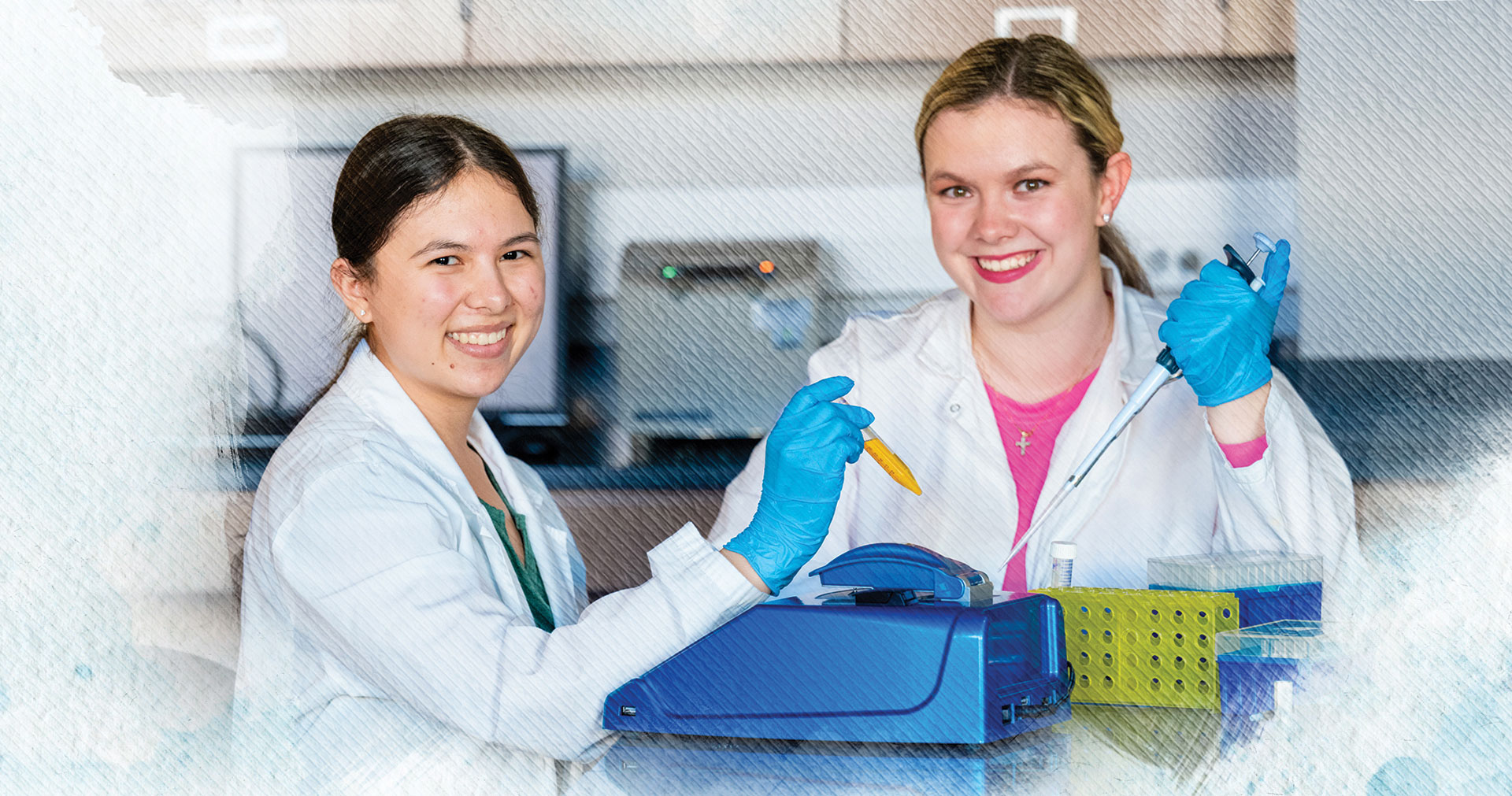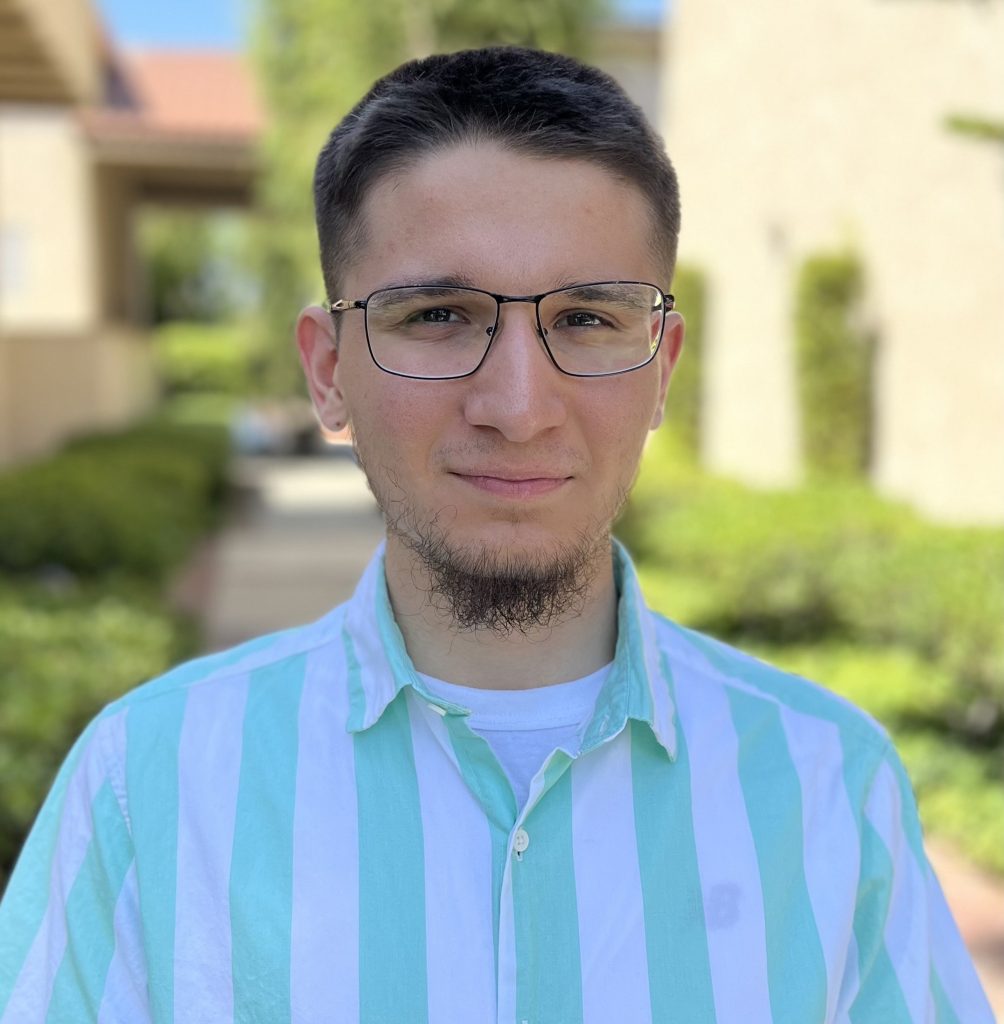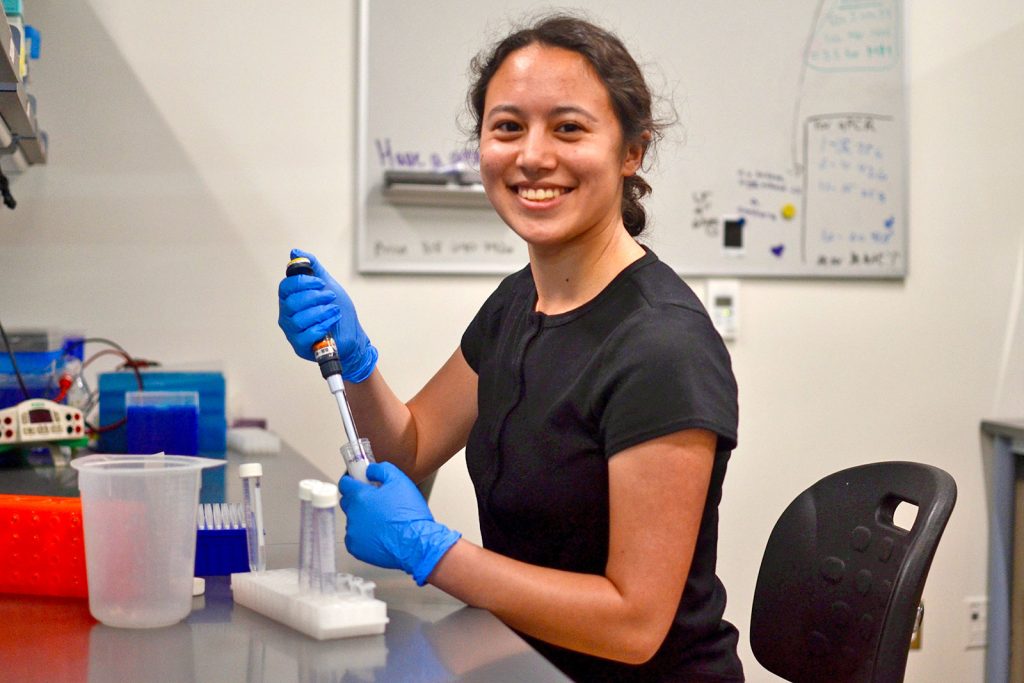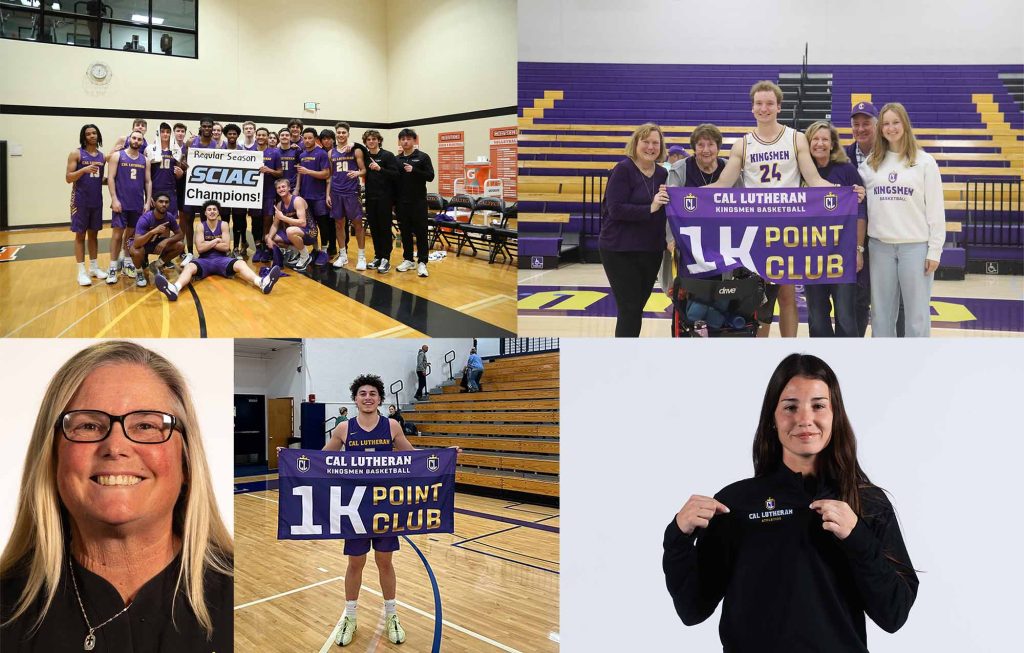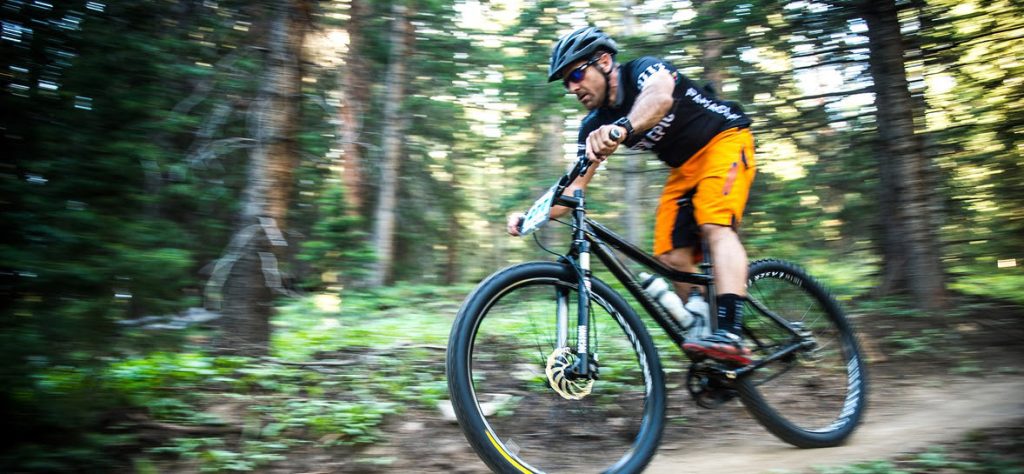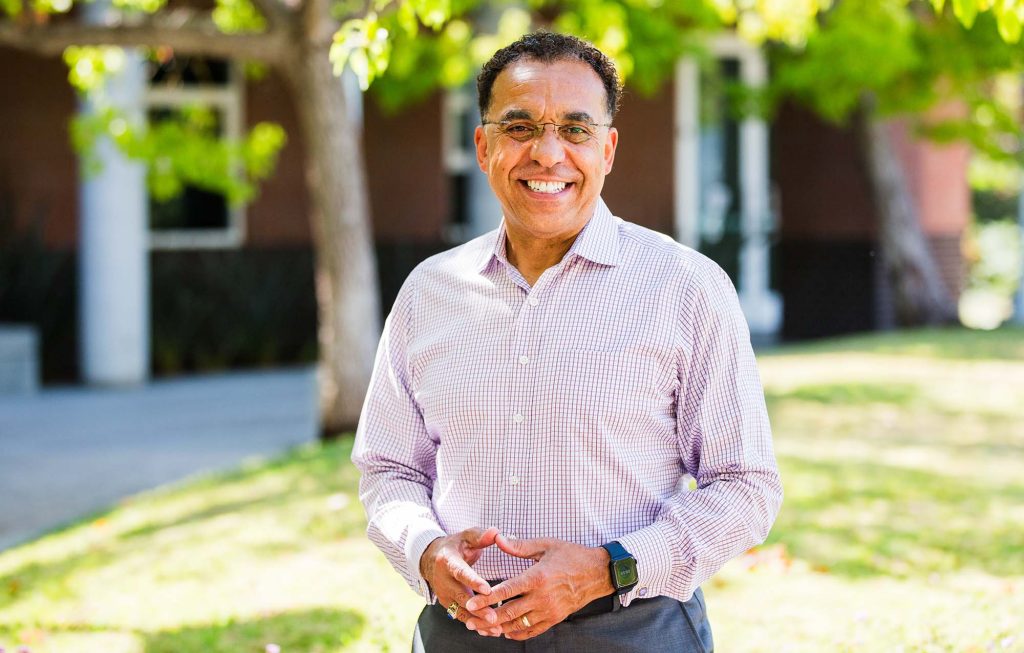Alina Tong’s path to the recognition she is receiving now as a young biosciences scholar here at Cal Lutheran started in elementary school — with gum.
For an elementary school science fair project, the inquisitive grade-schooler from Oak Park, only a few miles from the Cal Lutheran campus, decided to test the effects of chewing a piece of gum on a person’s internal temperature. First, she asked one group of her friends and family to chew gum for a few minutes without doing anything else, then asked a control group to sit and do nothing. Before each group started chewing, Alina took the temperature of each member of the group; immediately after the gum-chewing session was over, she took the participants’ temperatures again. She then compared the numbers.
The results? “The movement in general of chewing did result in a slight increase in internal temperature,” Tong said. “And mint gum had the highest increase in temperature.”
Tong, who continued experimenting with science throughout middle and high school, is now a senior biology major at Cal Lutheran, and in 2023 accomplished something few undergraduate students achieve: She was the lead author on a research paper published in a major scientific journal, which sets her on a path to scientific and higher-level academic success that most people don’t achieve until they are graduate students.
Tong, fellow senior biology major Alexis Jones, alumna Emma E. Caudill ’23 (now a PhD student at UC Irvine), their Cal Lutheran biology professor Michael Abdelsayed, PhD, and Luiz F. M. Passalacqua, PhD, of the National Institutes of Health, co-authored and published their research paper, “Characterization of a FourU RNA Thermometer in the 5’ Untranslated Region of Autolysin Gene blyA in the Bacillus subtilis 168 Prophage SPβ,” in the journal Biochemistry in September.
Don’t let the title of their research paper intimidate you. Even without a degree in biology, you likely can understand and appreciate the work they’re doing with RNA.
The central dogma of biology explains the flow of genetic information from DNA to protein. Our DNA contains genes, which act as instructions for what proteins will be made.
Alina Tong, senior biology major
Tong explained that “the central dogma of biology explains the flow of genetic information from DNA to protein. Our DNA contains genes, which act as instructions for what proteins will be made. DNA is transcribed into RNA, which is translated into protein.”
Most people are familiar with DNA, “but not so much RNA,” Jones said. “In my opinion, RNA is the true biological intermediate because it is right in the middle of the process of gene expression. It is known to be single-stranded, but many times it can actually fold in on itself and become double-stranded. RNA is also exciting because it can have the same kind of functions as DNA and proteins.”
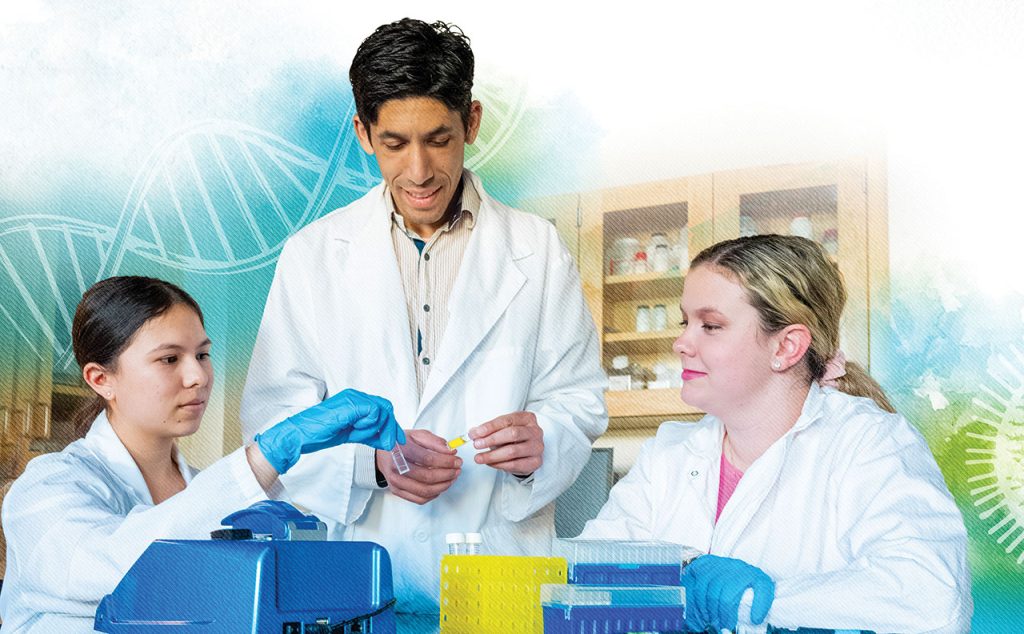
For their project, they looked at “RNA thermometers,” or RNATs, which can control gene expression based on structural changes they undergo in response to the temperature of the environment they are in. They studied an RNAT in a bacteriophage (a virus that infects bacteria).
“This particular virus, the Bacillus subtilis 168 prophage SPβ, infects a bacterium named Bacillus subtilis,” Jones said. “In this virus is a gene called blyA, which codes for a protein, an autolysin, which can break down the cell walls of bacteria. This can then help the bacteriophage lyse open its host bacterium and spread to find new hosts to infect.”
Microbiologists have known for many years what blyA does, but not how it is regulated, Jones said. “Through our work, we confirmed that this gene is regulated by an RNAT.”
Their findings are significant, Abdelsayed said, because “every organism has to respond to heat. If genes are being turned on in response to heat at the RNA level, it’s very important to understand which ones are being turned on.”
They were both very enthusiastic about science, knew the material, and always participated in classes.
Michael Abdelsayed, PhD, biology professor
Future research, he said, might “affect how we look at heat stress and how it effects the human microbiome.”
Tong, he said, “put in the majority of the work in writing the manuscript. She spent a lot of time doing figures and writing with me. I thought I’d have to take over the wheel, but she really wanted to be engaged all the way.”
Tong and Jones, who are close friends, met as first-year students during Cal Lutheran online orientation activities in 2020, when the pandemic prevented in-person contact. Both took online science courses with Abdelsayed, who started teaching at Cal Lutheran the same year, and he invited them to work in his research lab.
Jones got interested in science as a sophomore in high school. After suffering from gastrointestinal illnesses, Jones said, she became “fascinated with human physiology.”
“They were both very enthusiastic about science, knew the material, and always participated in classes,” said Abdelsayed of Jones and Tong.
Professors inviting undergraduates to work in their labs isn’t unusual, but the high-level research Tong and Jones conducted, and the amount of time they’ve spent in the lab, “is extraordinary,” said Abdelsayed, who likes to give undergraduates an early start with lab work so they have a meaningful amount of time to conduct research. “They work like graduate students.”
Tong and Jones began the research published in the journal in summer 2022, after receiving John Stauffer Research Fellowships in Chemical Sciences to support their work.
Abdelsayed is working on two more research papers that will include Tong as an author. He said the published research will help her get into PhD programs at graduate schools, especially because she’s listed as the lead author on two of them.
“Alina has actually already put the amount of work in to get a PhD thesis,” he said.
Jones, meanwhile, plans to take a gap year off after graduating from Cal Lutheran while continuing to work at the Free Clinic of Simi Valley, then apply to medical schools in June 2024.
Through our work we confirmed that this gene is regulated by an RNAT.
Alexis Jones, senior biology major
Tong, who is minoring in chemistry and public health, and serves as president of the school’s Women In STEM club, initially considered becoming a physician assistant. But the research opportunities she had on campus, as well as a summer fellowship at the National Institutes of Health, led her to instead apply to graduate schools. She hopes to earn a PhD in cellular and molecular biology, or biomedical sciences, then become an independent researcher.
“The professors at CLU are so supportive and willing to help students, and it’s really special to be an institution where there’s a focus on the undergrads,” Tong said.
She and Jones had plenty of difficulties and setbacks in the lab, but at Cal Lutheran, they’ve “learned about how research is an ongoing process,” Tong said. “And I’ve learned to push through challenges, which allows for opportunities of growth. Wherever I end up in the future, these experiences have provided valuable lessons of creativity, drive and resilience.”



